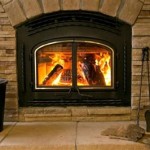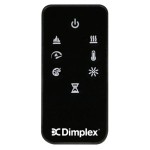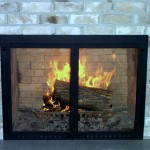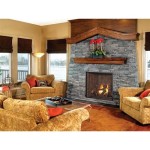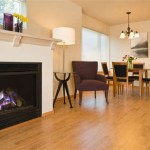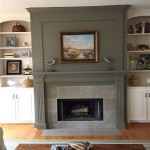Pellet Stoves and Fireplace Inserts: A Comprehensive Guide
Pellet stoves and fireplace inserts offer a modern and efficient heating solution, utilizing compressed wood or biomass pellets as fuel. These appliances provide a controllable and relatively clean-burning alternative to traditional wood-burning stoves and fireplaces. This article will delve into the functionality, benefits, and considerations surrounding pellet stoves and fireplace inserts.
Pellet stoves resemble traditional wood stoves in appearance but operate on a vastly different principle. They utilize an automated feeding system to deliver pellets from a hopper to the combustion chamber. This controlled fuel delivery allows for consistent and predictable heat output, which can be adjusted based on specific heating needs. The combustion process is typically more complete than that of a wood stove, resulting in lower emissions and higher efficiency.
Fireplace inserts, on the other hand, are designed to be installed directly into an existing fireplace opening. They transform an inefficient open-hearth fireplace into a functional and efficient heating source. Similar to pellet stoves, pellet fireplace inserts utilize a hopper and automated feeding system for fuel delivery. They also vent through the existing chimney, although a liner is generally recommended to ensure proper draft and safety.
Understanding Pellet Fuel and Combustion
The fuel source for pellet stoves and inserts is a key component of their performance and environmental impact. Pellets are typically made from compressed sawdust, wood shavings, and other wood byproducts. The standardization of pellet production ensures a consistent fuel source with a known BTU (British Thermal Unit) content. This predictability allows for more accurate heat output calculations and fuel consumption estimations.
The combustion process in a pellet stove or insert is precisely controlled. An auger, a screw-like mechanism, delivers pellets from the hopper to the burn pot, where they are ignited. A combustion fan provides the necessary oxygen for efficient burning. Many models incorporate sensors and electronic controls to monitor and adjust the fuel feed and air supply, optimizing combustion and minimizing emissions. The resulting ash production is significantly lower than that of a traditional wood stove, simplifying maintenance.
The quality of the pellets directly impacts the efficiency and performance of the appliance. High-quality pellets are denser, produce less ash, and burn more cleanly. It is recommended to use pellets that are certified by organizations like the Pellet Fuels Institute (PFI) to ensure consistent quality and performance. Moisture content is a critical factor; drier pellets burn more efficiently and produce less creosote buildup in the venting system.
Pellet stoves and inserts typically feature a heat exchanger to maximize heat transfer to the surrounding air. This exchanger extracts more heat from the combustion gases, increasing the overall efficiency of the appliance. The heated air is then circulated into the room using a convection fan, providing a comfortable and consistent heat distribution.
Advantages of Pellet Stoves and Fireplace Inserts
Pellet stoves and fireplace inserts offer numerous advantages over traditional heating methods. One of the primary benefits is their high efficiency. These appliances typically achieve efficiencies of 75% to 90%, significantly exceeding the efficiency of open-hearth fireplaces, which can be as low as 10%. This efficiency translates into lower fuel consumption and reduced heating costs.
Another advantage is the controlled combustion process, which results in lower emissions compared to traditional wood stoves. Pellet stoves and inserts are often certified by the Environmental Protection Agency (EPA) for meeting specific emission standards. This makes them a more environmentally friendly heating option.
Convenience is another significant factor. The automated fuel feeding system eliminates the need for frequent manual reloading of wood. Hoppers can hold a substantial amount of pellets, allowing for extended burn times. Many models also feature programmable thermostats, which enable users to set desired temperatures and automatically adjust the heat output based on their schedules.
Safety is also enhanced in pellet stoves and inserts. The enclosed combustion chamber minimizes the risk of sparks and embers escaping into the room. Many models incorporate safety features such as overheat sensors and automatic shut-off mechanisms. The venting system is also designed to prevent the buildup of dangerous gases, further enhancing safety.
Furthermore, pellet stoves and inserts can often qualify for tax credits and rebates, depending on location and specific model specifications. These incentives can further reduce the overall cost of ownership and make them an attractive heating option.
Key Considerations for Installation and Maintenance
Proper installation is crucial for the safe and efficient operation of a pellet stove or fireplace insert. It is recommended to hire a qualified professional to perform the installation, ensuring compliance with local building codes and manufacturer's instructions. The venting system must be properly installed and sealed to prevent leaks and ensure adequate draft.
Regular maintenance is essential for maintaining the performance and longevity of the appliance. This includes cleaning the burn pot, ash pan, and venting system on a regular basis. The frequency of cleaning depends on the amount of usage and the quality of the pellets used. A thorough cleaning should be performed at least once per year, preferably before the start of the heating season.
The venting system should be inspected regularly for creosote buildup and blockages. Creosote is a flammable substance that can accumulate in the venting system and pose a fire hazard. Professional chimney sweeps can perform inspections and cleanings to ensure the venting system is in good working order. A blocked venting system can also lead to inefficient combustion and increased emissions.
The auger and combustion fan should also be inspected and lubricated as needed. These components are critical for the proper operation of the appliance, and any malfunctions can affect its performance. Keeping the hopper clean and free of debris is also important for ensuring a smooth and consistent fuel feed.
Additionally, it's important to properly store pellet fuel in a dry, protected location. Moisture can significantly reduce the effectiveness of the pellets, causing them to crumble or burn inefficiently. A sealed container or covered storage area is recommended to prevent moisture absorption.
The choice between a pellet stove and a pellet fireplace insert depends on individual needs and existing home infrastructure. A pellet stove is a freestanding appliance that can be placed virtually anywhere in a room, provided it has access to proper venting. A pellet fireplace insert, on the other hand, is specifically designed to fit into an existing fireplace opening, offering a convenient way to upgrade an inefficient fireplace.
The size of the space to be heated is an important factor in choosing the appropriate size of the pellet stove or insert. BTU ratings indicate the heat output capacity of the appliance, and it's crucial to select a model that is adequately sized for the square footage of the space. An undersized appliance will struggle to maintain a comfortable temperature, while an oversized appliance may cycle on and off frequently, leading to inefficient operation.
The aesthetic appeal of the appliance is also a consideration for many homeowners. Pellet stoves and inserts are available in a variety of styles and finishes to complement different home decors. Some models feature viewing windows that allow users to enjoy the ambiance of a fire. The choice of style is a matter of personal preference and should be considered alongside performance and efficiency factors.

Pellet Fireplace Inserts Lopi Stoves Made In Usa

Pellet Fireplace Inserts Lopi Stoves Made In Usa

Pellet Fireplace Inserts Complete Home Concepts

Pellet Fireplace Inserts Lopi Stoves Made In Usa

Pellet Stove Inserts The 1 Fireplace

Wood Stoves Pellet Gas Fireplace Inserts

Fireplace Insert Stoves Wood Gas Pellet Traditional Baltimore Maryland

Pellet Burning Fireplace Inserts Sierra Hearth And Home

Gci60 Cast Iron Pellet Stove Insert Regency

Pellet Fireplace Inserts Insert Installation In Burlington Wi More
Related Posts


